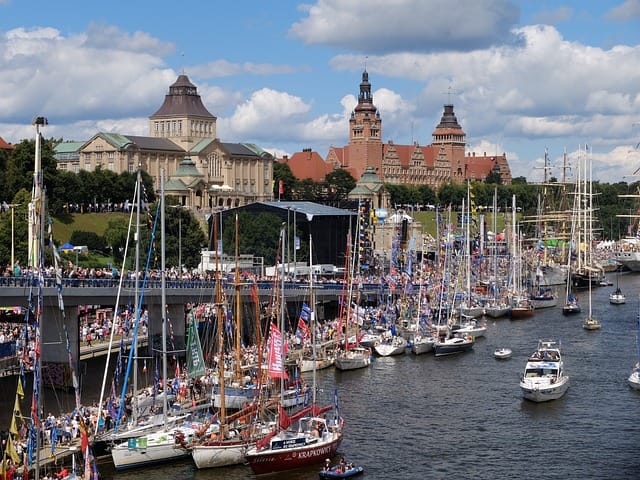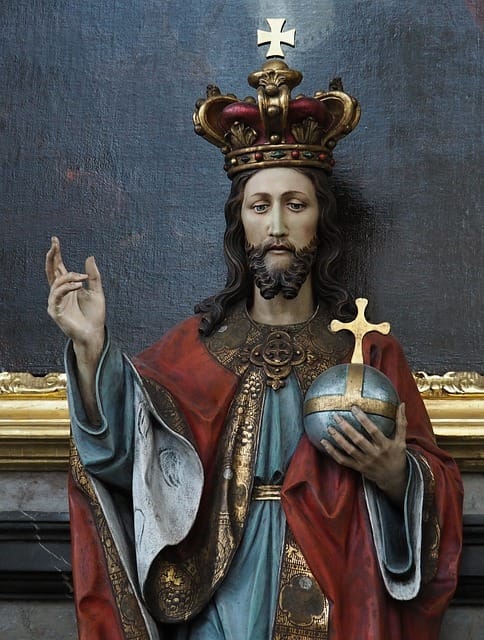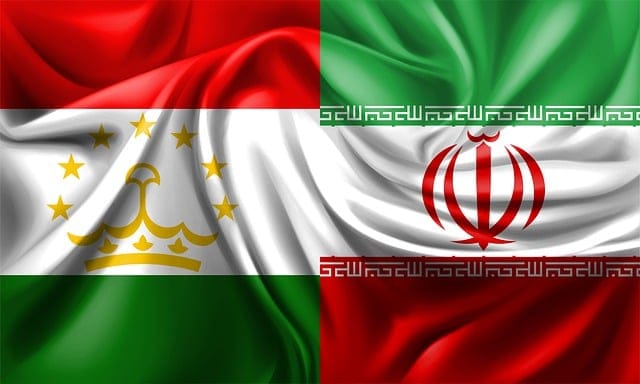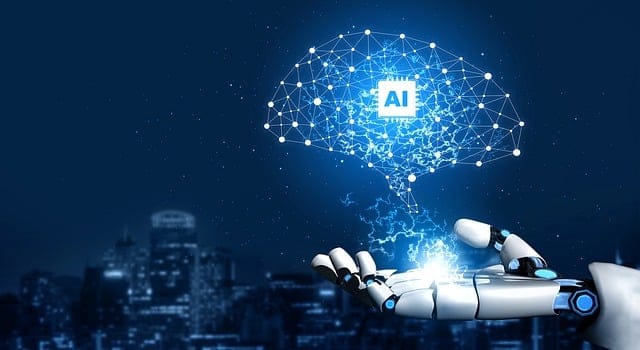So, what’s the deal with these two bad boys? Well, AI, or artificial intelligence, is like the brain who makes sense of the data, while IoT, or the Internet of Things, is the vast network of devices, from your smart fridge to your fitness tracker, all buzzing with information. When these two come together, they create what we call smart systems. It’s like the ultimate team-up in a superhero flick!
Picture this: your smart thermostat learns your preferred temperature settings and adjusts itself accordingly, all while communicating with your smart lighting system to create the perfect ambiance in your living space. It’s as if your home has a sixth sense! In industries, this means machines are not just chugging along mindlessly; they’re making decisions based on real-time data. Think of factories where robots identify and fix problems before humans even realize there’s an issue. This isn’t just tech for the tech-savvy; it’s about enhancing everyday life.

But wait, there’s more! With AI analyzing patterns and data from IoT devices, businesses can anticipate customer needs and streamline operations like never before. For instance, in agriculture, sensors can detect crop health, moisture levels, and weather patterns, while AI algorithms decide the best course of action. It’s like giving farmers a superpower!
Smart Revolution: How AI and IoT are Shaping the Future of Connected Living
This brave new world of connected living is all about seamless integration. Think of it like a well-orchestrated symphony where every device, from your fridge to your thermostat, plays its part. They communicate with each other, gather data, and learn from your habits. Have you ever wondered how your smart speaker manages to understand your every command? That’s AI at work! It learns from your voice over time, becoming more in tune with your preferences.
Now, combine that with IoT, which essentially connects all these smart devices to the internet. It’s like weaving an intricate web, enabling everything from your wearable fitness tracker to your home security system to exchange information and enhance your living experience. For instance, just imagine if your fitness tracker could notify your fridge to reorder milk when you’re running low. No more late-night cereal run!
Bridging the Digital Divide: Unpacking the Synergy Between AI and IoT Technologies
Think about it: AI brings the brainpower while IoT fills in the sensory details. It’s like having a brilliant chef (AI) whip up a gourmet meal while relying on fresh ingredients (IoT) gathered straight from your pantry. AI processes all the data collected by IoT devices, making sense of your daily habits to predict what you’ll need next. For instance, smart home systems analyze your routines to optimize energy usage and enhance comfort—essentially giving you a personalized environment without lifting a finger.
Now, you might wonder, how does this all help in closing the digital gap? Well, think about underserved communities that lack access to reliable internet. By merging AI and IoT, we can develop smart solutions tailored to their needs—like localized weather alerts for farmers or health monitoring systems for remote villages. It’s about creating technologies that empower rather than alienate.
From Smart Homes to Smart Cities: The Transformative Power of AI-Driven IoT Solutions
Take a moment to picture a city where streetlights dim when there’s no one around and public transport updates in real-time, significantly cutting down travel times. It’s like having a personal assistant for the entire city! These smart systems gather data continuously, processing it through AI algorithms, which means they can learn and adapt over time. Have you ever wondered how your fitness tracker knows when you’ve reached your step goal? That’s the power of connected devices at work!

The incredible thing about AI-driven IoT solutions is how they seamlessly integrate into our daily lives. Think of it as a symphony where each device—thermostats, security cameras, parking sensors—plays a crucial role in creating a harmonious living environment. From health monitoring in homes to smart waste management in cities, these technologies gather invaluable insights to enhance efficiency and reduce costs.
Revolutionizing Industries: The Role of AI and IoT in Creating Intelligent Ecosystems
Let’s break it down. AI is like the brain, processing massive amounts of data in the blink of an eye, while IoT acts as the nervous system, connecting devices and letting them communicate with each other. Together, they are creating intelligent ecosystems that can revolutionize everything from agriculture to healthcare. Picture this: farmers using AI-driven drones that monitor crops in real-time, predicting the best times to harvest based on weather patterns. It’s like having a farming assistant that never sleeps!
Now, think about your smart home devices. Ever wonder how they seem to know you so well? That’s AI at work, analyzing your patterns and preferences, while IoT enables seamless interactions between your thermostat, lights, and security systems—all working in harmony to create an optimal living environment. It’s almost like hosting a party where every guest knows their role perfectly!
The healthcare industry isn’t left out either. With AI analyzing patient data and wearable devices tracking health metrics, doctors can provide more personalized care. Imagine a world where illnesses are caught before they escalate—a true game-changer for patient outcomes.
So, whether it’s enhancing efficiency in businesses, optimizing energy consumption, or improving our daily lives, AI and IoT are crafting a smarter future for us all. The real question is: Are you ready to embrace this intelligent ecosystem?
The Future is Now: Exploring Cutting-Edge AI and IoT Innovations for a Smarter Planet
Have you ever wondered how all this magic happens? It’s actually simpler than you might think. AI is like the brain, processing data at lightning speed to make decisions, while IoT acts like the nervous system, connecting devices and enabling communication. Together, they’re revolutionizing everything from home automation to traffic management. Think of it as a dance where every step is perfectly choreographed for efficiency and convenience.
Let’s take smart cities as an example. Imagine streets lined with sensors that monitor traffic flow—eliminating gridlock and reducing pollution in real-time. It’s as if our cities are becoming sentient, understanding our needs and adapting on the go. Did you know that with AI and IoT, public transportation can optimize routes based on commuter patterns? This isn’t sci-fi; it’s happening right now!
And it’s not just about convenience. Healthcare is undergoing a massive transformation, too. With smart wearable devices, doctors can monitor patient vitals remotely, spotting issues before they balloon into emergencies. It’s like having a guardian angel watching over your health, ensuring you stay in tip-top shape with minimal effort.
As we delve deeper into this tech-driven era, the integration of AI and IoT isn’t just a trend; it’s a leap toward a future where our daily lives, communities, and ecosystems thrive in harmony. Can you feel the excitement? The future really is now.
Collaborative Intelligence: How AI and IoT are Reshaping Modern Business Practices
Think about your favorite online shopping experience. Ever noticed how when you browse, the site suggests products you didn’t even know you wanted? That’s AI and IoT collaborating! The AI processes data from past purchases, while IoT gathers real-time information about your browsing habits. It’s not mind reading; it’s smart technology making educated guesses to enhance your experience. That’s what Collaborative Intelligence is all about—mixing the strengths of human insight and machine efficiency to create something truly magical.
And let’s not forget the impact on supply chains. Before, managers relied on intuitive guesses for inventory. Now, with IoT sensors tracking stock levels and AI algorithms predicting demand patterns, businesses can keep shelves stocked without overflows. It’s like having a crystal ball that tells you when to order more or when to run a sale.

Moreover, this partnership isn’t just transforming individual businesses; it’s revolutionizing entire industries. Healthcare providers can now use data collected from IoT devices to monitor patients remotely, while AI analyzes trends in treatment effectiveness. It’s a win-win, enhancing patient care while reducing costs.
In this high-stakes game of modern business, Collaborative Intelligence isn’t just an option; it’s becoming a necessity. Who wouldn’t want to stay ahead with such a dynamic duo at the helm?
Frequently Asked Questions
How Can Smart Systems Improve Everyday Life?
Smart systems enhance daily life by automating routine tasks, improving efficiency, and providing personalized solutions. They can optimize home energy use, streamline communication, and enhance convenience through devices like smart home technology and AI-driven applications, ultimately saving time and effort.
How Do AI and IoT Work Together?
AI and IoT work together by enabling interconnected devices to collect and share data, which AI algorithms analyze to provide insights and automate processes. This synergy enhances decision-making, optimizes operations, and improves user experiences through intelligent responses to real-time data.
What Are the Benefits of Smart IoT Solutions?
Smart IoT solutions enhance efficiency, reduce costs, and improve decision-making through real-time data collection and analysis. They enable automation, optimize resource management, and provide valuable insights, leading to increased productivity and better user experiences across various industries.
What is the Role of AI in IoT Systems?
Artificial Intelligence enhances IoT systems by enabling devices to analyze data, make decisions, and improve processes autonomously. It facilitates smarter data management, predictive analytics, and real-time responses, which lead to increased efficiency, reduced operational costs, and improved user experiences across various applications.
What Challenges Do AI and IoT Integration Face?
Integrating AI with IoT presents several challenges, including data privacy and security concerns, interoperability among diverse devices, the need for real-time processing capabilities, and the complexities of managing vast amounts of data. Additionally, there are issues related to network reliability and the lack of standardized protocols, which can hinder seamless collaboration between AI systems and IoT devices.






